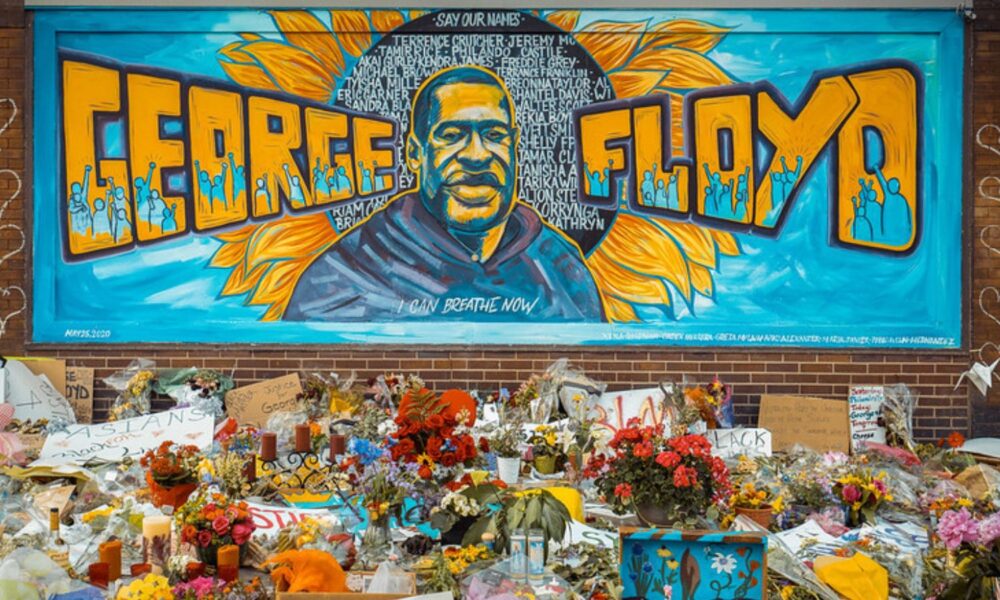It’s been two years since George Floyd’s killing and the uprising that followed it. Something clicked for a lot of people at the time. This is why more people went out to protest in the United States than ever before to demand change. This is also why scientific societies felt compelled to say something and issue statements.
Scientific societies and academic departments were among the many institutions and organizations that felt the pressure to change. Their immediate reaction to this pressure was to issue statements. Issuing statements became a widely observed norm—a standard of appropriate behavior.
These were not just a few so-called “radical” social science, humanist, and minority-led societies that issued statements. More than 125 scientific societies issued statements, ranging from the largest and best-funded societies to the smaller minority-interest societies.
People often viewed these statements with skepticism, particularly Black scientists who have felt the toll of exclusion and underrepresentation in the sciences. Statements also elicited derision from people who argue that sciences must remain silent in the face of injustice to preserve a guise of objectivity and among those who promote the myth that anti-Black violence consists of a series of isolated incidents in the hands of a few bad apples. As sociologist Rashawn Ray affirms, bad apples come from rotten trees.
Passive solidarity
I worked with a team of researchers to get a sense of what these statements contained. The findings were frustrating for those of us who affirmed that words were not enough. We confirm the expectation among those who sensed that these statements were largely performative, lacking clear commitments to act.
There needed to be more commitment to action in statements from scientific societies. Out of 127 scientific societies whose statements we managed to obtain, only 10 announced clear commitments to action. Even among societies that said they would act, the commitments consisted of forming committees, task forces, meeting with senior leadership, or diversity trainings.
Statements can have the effect of magnifying the claims of marginalized groups. Issuing statements can open pathways for more active forms of solidarity with marginalized groups. Statements might even offer opportunities to hold scientific societies and institutions accountable for their histories of racism and exclusion. Yet, statements that lack clear commitments to action are only passive forms of solidarity. Passive forms of solidarity tend to have less political impact than more active forms of solidarity.
The problem is racism, and it is systemic and intersectional
Statements largely failed to provide a rich understanding of the problem that led to the killing of George Floyd or to specify the systems that enable and reproduce violence against Black people.
Societies rarely mention names other than George Floyd in their statements, signaling a troubling tendency to fashion an understanding of the problem of racism as isolated and one of individual-level actions as opposed to an understanding of racism as systemic. Social sciences and the humanities, often thought to be more radical or left-leaning fields than natural and physical sciences did not live up to their reputation as radicals. Social science and humanities scientific societies were less likely to name racism explicitly in their statements. Societies are not calling for defunding the police (only the American Studies Association did), suggesting a disconnect from the more radical policy proposals and a bias for more moderate understandings of and solutions to the problem of racism.
While some might see the moderate nature of statements as the more palatable direction for scientific societies to take if they are going to step into the fold, these predispositions for moderation deny opportunities for deliberation, contention, inclusion, and democracy among the communities that belong to or are affected by scientific institutions. Further, suppose scientific societies are to be governed in ways that calculate and mirror what is politically palatable for the racial majority groups that the Democratic party does not take for granted. What credibility is there for these societies as promoters of science for the public good if they shape the content of their speech to conform to what is politically convenient for the Democratic party? Scientists must speak and demand action against injustice regardless of the political leanings of those who hold power to determine who wins US elections.
Systemic understandings of racism exist at the margins
Collectively, scientific societies are fashioning limited understandings and framings of the problems of racism and policing in the United States despite being the very institutions whose mission it is to study our world and forward ways to change it. Societies remained timid and sustained a bias for limited and more moderate solutions to this problem at a time when people risked their lives to protest anti-Blackness during the COVID-19 pandemic. Across all scientific fields, however, only a third of societies offer a deeper analysis of racism.
Societies are also failing to provide intersectional understandings of racism. Intersectionality is the notion that conditions of disadvantage produced by multiple interacting systems of oppression must be addressed concurrently. Very few statements mention gender and sexuality issues in their statements. Only five scientific societies mentioned Black Trans Lives and the LGBTIQ+ community despite the centrality of these identities within organized efforts to address racism. Only three societies mentioned Black women in their statements. Despite being less likely to name racism explicitly in statements, when social science associations explicitly named racism, they provided more nuanced understandings of it as both a historical and ongoing problem.
Adopting intersectional approaches to enacting solidarity to fight racism is not just about issuing statements and diagnosing the problem. Intersectionality is a project that emerges from movement spaces. It is oriented towards a synthesis of theory and praxis. Limited understandings of the problem of racism are obstructing more meaningful action and engagement with organized efforts to subvert racism.
Yet, more nuanced understandings of racism and calls to action exist. They must be brought to the center. Those forwarding richer understandings of racism and calls to action are not the best-funded societies, and they tend to be under the leadership of people from marginalized groups. Minority-interest organizations were more likely to refer to George Floyd’s death as a killing or murder than general-interest organizations by a 26 percent margin. Less than half of general-interest organizations referred to George Floyd’s death as a killing.
Minority-interest organizations, on the other hand, refrained from referring to racism as an individual problem. Some 59 percent of minority organizations spoke of racism as systemic compared to only 31 percent of general-interest organizations. Early evidence points to the likelihood that academic departments and scientific society sections were more willing to commit to action than the institutions that house them.
The US scientific community does not lack deeper understandings of racism. The problem is not an absence of these perspectives, it is their peripheral status. We must learn from and center minority leadership if we are to engage effectively in collective efforts to subvert it within the scientific community.
Could they have done more?
One might ask, what more could scientific societies have done? Societies could have adopted more inclusive and participatory budgetary processes that allow their membership from traditionally excluded groups greater power to allocate resources to combat exclusion in the sciences. This would stand in contrast with the condescendence with which members tend to be told that societies lack the funds to do much more than issue statements. Societies could have opened consultative processes with binding outcomes whereby people from traditionally excluded groups provided representation that more closely mirrors the demographic makeup of the regions in which they operate. Societies could have embraced mobilization, supporting science advocacy, and the leadership of the scientists who did not stand by silent in the face of injustice.
These measures do not necessarily entail spending more money, usually cast as beyond the bounds of what is possible. Instead, these measures would subvert the means by which funds are currently allocated. Societies need not save science for groups marginalized in the sciences. These groups can do it themselves. Scientific society leaders do not need to do the dreaming for those who have long been dreaming of alternatives to the status quo.
Critical hope for change
While the lackluster content of these statements is frustrating for those of us who want to see more done, not just said, I find some opportunity for change in these statements. Statements reaffirmed that the United States is not the post-racial society that some celebrated after the election of the first Black president. They recognized that anti-Blackness pervades not just the institutions that govern us but also those that legitimize knowledge production. Efforts to subvert anti-Blackness and the system of racial capitalism that upholds it can depart from this recognition of their pervasiveness and the inadequacy of scientific societies’ reaction to the 2020 uprising.
These statements took a snapshot of where scientific institutions were in 2020. The progress or lack thereof among scientific societies to become anti-racist organizations can be measured against their status in 2020 and the performance that they put together when they were pressured to do something. Statements can be a tool for accountability. The agency that these statements denied to groups marginalized in the sciences should be exercised to transform scientific societies and reorient their practice to fulfill their mission to serve the public.

